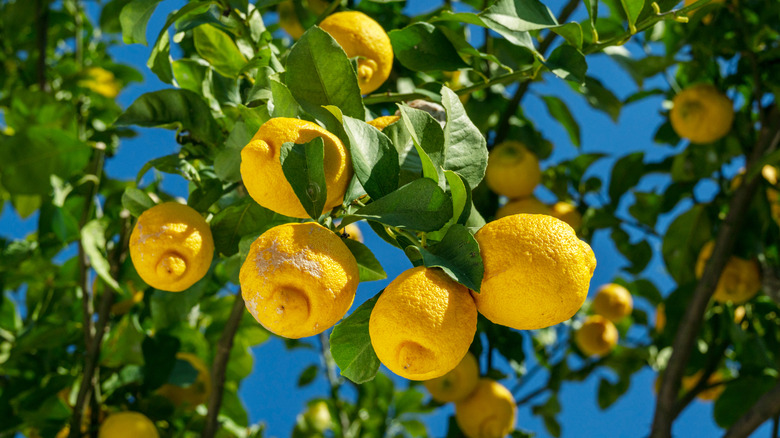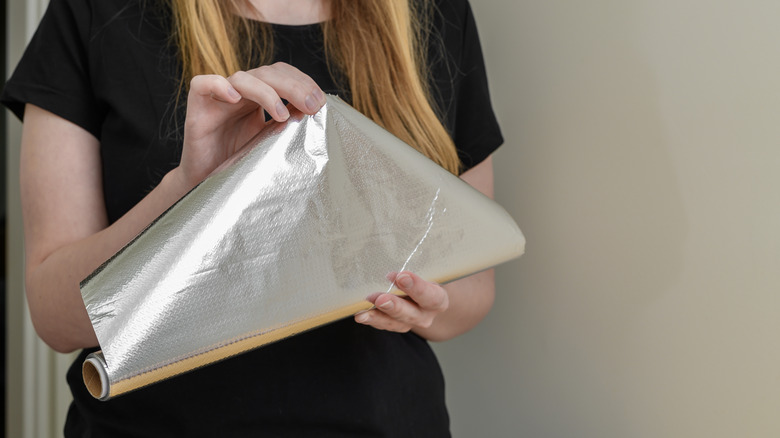What It Means If You See Aluminum Foil Wrapped Around A Lemon Tree (And Why You Should Try It)
Aluminum foil is always handy in the kitchen, and this winter you might find it useful in your garden, too. You may have seen neighbors or gardening influencers wrapping their lemon trees with aluminum foil, which might seem strange at first, but aluminum foil could be the secret to protecting your trees in the winter, offering insulation and protection from the sun.
Wrapping your trees with aluminum foil might seem like tin-foil hat behavior, but it comes from the practice of tree wrapping, which can be done with a variety of materials — including aluminum foil — for different results. When trees drop their leaves in the winter, they're left vulnerable to the sun's rays. Without shade, the exposed southwest side of the trunk can be subjected to sunshine that increases the bark's temperature by as much as 77 degrees, as opposed to the cooler north side. Once the sun disappears behind the horizon, the temperature drops, causing rapid freezing of the trunk's previously heated cells, which results in cracked bark. Young citrus trees are especially delicate. By wrapping the tree, you provide its trunk shade, keeping its temperature even throughout the day. This is necessary for the first two winters, when the bark is still developing its texture, but once your lemon tree is well-established and mature, you won't need to wrap it every winter.
Why aluminum foil is used to protect lemon trees
Lemon trees are a great way to add some pucker to your life, but they're sensitive, especially in the winter. Wrapping them is a great way to keep them content in the colder months, when they are vulnerable to frost, but why wrap with aluminum foil? Materials like brown Kraft paper and twine can be used to wrap a tree, but aluminum foil works especially well because of how reflective it is. When the sun's rays hit the foil, they bounce right off, which keeps the tree safe from heat stress. Even if the bark does not crack, heat stress can lead to stunted growth and prematurely dropped fruit.
Wrapping the base of a lemon tree keeps it cool, but the wrapping shouldn't just stop there. Extending the aluminum foil coverage to the soil around the tree helps reduce evaporation. While the tree itself goes dormant in the winter, its roots do not, continuing to grow outward in search of water. Dry winter air can increase evaporation, so covering the roots protects them from winter drought stress.
How to wrap your lemon tree with aluminum foil to help it through winter
Once you get finished with your next meal, repurpose your aluminum foil as a protective wrap for your lemon tree. To get the best results from aluminum foil tree wrapping, start by clearing away any debris or mulch around the base of the tree and its surrounding soil. Wrap your foil around the trunk, covering the lower 12 to 16 inches and the soil surrounding the tree's base. Make sure the foil is snug but not tight and tape the ends to secure them.
When extending the aluminum foil to the soil above the tree's roots, make sure the foil is loose to allow airflow. You will need to replace the foil every few weeks and after heavy rain. Aluminum foil is not a cure-all, however, so continue implementing other protective measures like surrounding the tree with wood chips to ensure your lemon tree returns healthy in the spring.


